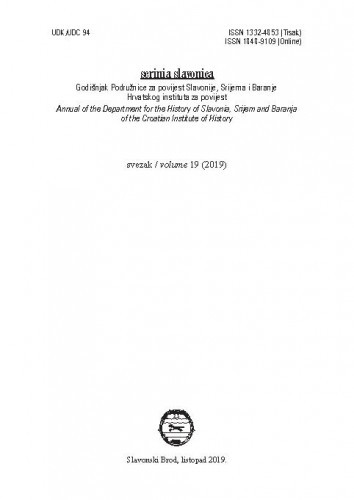Autorice na temelju neobjavljene arhivske građe, onodobne periodike te relevantne znanstvene literature obrađuju postojanje, rad i ulogu Izbjegličkog centra Gašinci u razdoblju od njegova otvaranja 1992. pa sve do njegovog zatvaranja 1999. Cilj je uočiti humanitarno djelovanje hrvatskih vlasti i različitih humanitarnih organizacija u zbrinjavanju pretežito muslimanskih izbjeglica s teritorija Bosne i Hercegovine u izbjegličkom centru. Rad će obrazložiti razloge i svrhu nastanka gašinačkog centra, prikazati njegov smještajni kapacitet te utvrditi životne uvjete izbjeglica u njemu. Osim toga, funkcioniranje Izbjegličkog centra Gašinci temeljilo se na osiguranju visoke kvalitete društvenog i vjerskog života, što se neophodno odvijalo u komunikaciji i suživotu s Đakovštinom. Rad će stoga prikazati oblike društvenog i vjerskog života, humanitarne organizacije koje su pripomogle realizaciji brojnih projekata, ali isto tako i samom osnutku i funkcioniranju izbjegličkog centra. U konačnici, rad obrađuje potencijalnu eskalaciju etničkih sukoba u centru i Đakovštini zbog hrvatsko-muslimanskog sukoba u Bosni i Hercegovini, određene netrpeljivosti između izbjeglica te smještanje ostalih potrebitih u Gašince.; On the basis of unpublished archival materials, periodicals and the relevant scholarly literature the authors have given an account of the existence, the work and the role of the Gašinci Refugee Centre from its opening in 1992 up until its closing in 1999. The aim has been to note the humanitarian activities of the Croatian government and of various humanitarian organizations in hosting primarily Muslim refugees from the territory of Bosnia and Herzegovina in the Refugee Centre. This paper elaborates the reasons and the purpose of the establishment of the Centre in Gašinci, presents its accommodation capacities and determines the living conditions of the refugees in the Centre. Furthermore, the functioning of the Gašinci Refugee Centre was based on the assurance of a high quality of social and religious life which was necessarily carried out in communication and coexistence with the Đakovo region. Hence, this paper presents the forms of social and religious life and of humanitarian organizations that supported the implementation of numerous projects as well as the establishment and the functioning of the Refugee Centre. Because of the specific circumstances of politics and the war, the end of the paper discusses the potential escalation of ethnic conflicts in the Centre and the Đakovo region due to Croatian-Muslim conflicts in Bosnia and Herzegovina as well as to certain animosities between the refugees and other deprived persons in Gašinci in need of accommodation. Seven whole years, from the establishment of the Refugee Camp in Gašinci on May 31, 1992 until its closure on October 18, 1999, more than 30,000 refugees found shelter in Gašinci from the raging war. Most of the refugees in the Gašinci Centre were Muslim refugees from Bosnia and Herzegovina, but there was also a small number of Croats from Bosnia and Herzegovina living among them.
Sažetak

 Scrinia Slavonica : godišnjak Podružnice za povijest Slavonije, Srijema i Baranje Hrvatskog instituta za povijest : 19,1(2019) / glavni i odgovorni urednik Stanko Andrić.
Scrinia Slavonica : godišnjak Podružnice za povijest Slavonije, Srijema i Baranje Hrvatskog instituta za povijest : 19,1(2019) / glavni i odgovorni urednik Stanko Andrić.